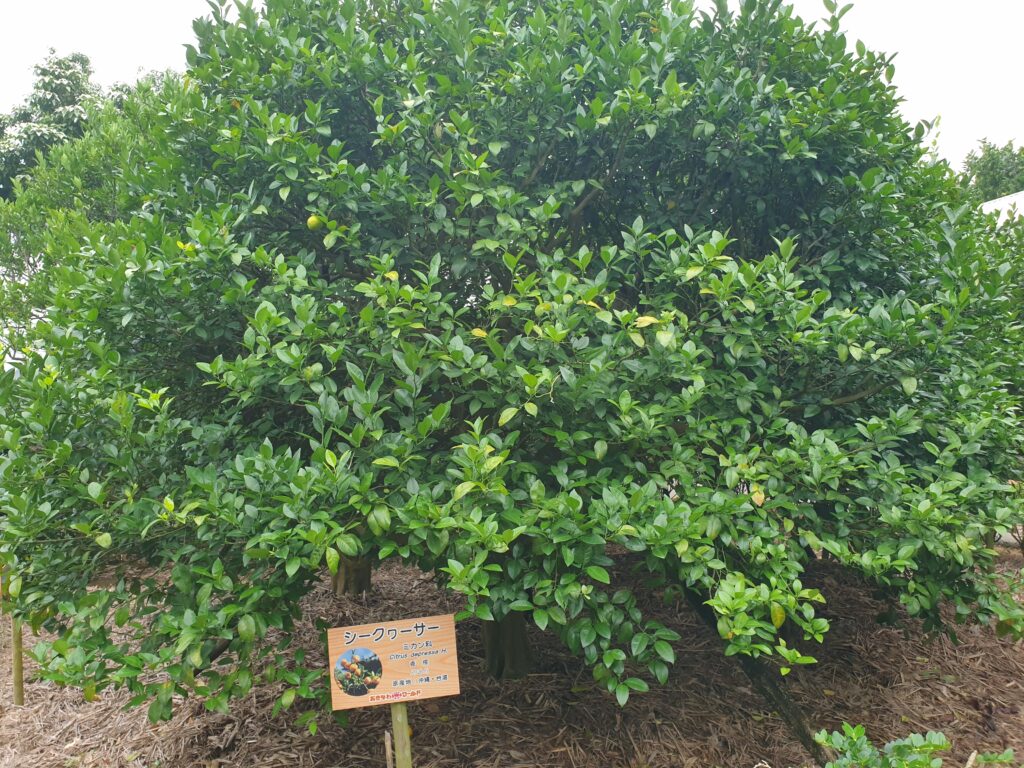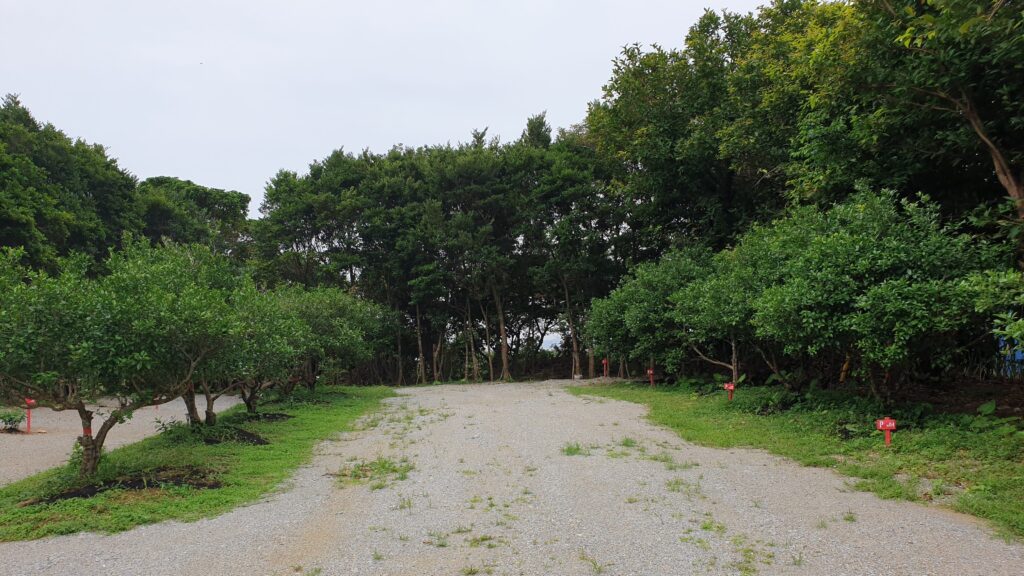Shiikwaasa is a well-known traditional citrus from Okinawa, for which more than 200 cultivars and varieties are listed. In Okinawan dialect, the name means ‘added vinegar’ because of its strong acidity when immature. Shiikwaasa’s harvest season is long, from August to February, and Shiikwaasa has a unique use. The unripe fruits, harvested in August and September, are used for cooking, while the partially ripe fruits, available from October to December, are used for processing (mainly for juice). Ripe fruits with reduced acidity are available in January and February and are eaten fresh. When green, the fruit is very acidic and is often used as a lemon or lime to garnish or flavour dishes, but it is also used to make jams. The juice can be diluted or sweetened (Orion Breweries, 2023).
Polymethoxylated flavones (PMF, tangeretin, nobiletin and sinensetin) are characteristic components of Shiikwaasa. Most uses of Shiikwaasa involve processing into juice. However, PMF and many other useful constituents (e.g. synephrine) are mainly contained in the peel (Hirose, 2012). Ōgimi village, which accounts for 60% of Shiikwaasa production in the prefecture, is also called the longevity village with the highest rate of centenarians in Japan (National Geographic, 2020).
Citrus depressa Hayata is grown in Okinawa and Taiwan. Shiikwaasa prefers hot and humid climates and grows very vigorously in such climates. In Europe, however, it is hardy to -12°C (Bouladou, 2015). In its natural habitat, the trees grow 3-5 m tall and resemble the well-known Calamondin (Citrus microcarpa Bunge). The flowers are white and about 3 cm in diameter, usually blooming in April. The fruits are small, flattened, weigh about 25-60 g, the skin is dark green and turns yellow during ripening (Orion Breweries, 2023).
Wu, Sugimoto et al. (2021) describe Shiikuwaasa as an F1 hybrid derived from a small-fruited mandarin refered to as RK3, the closest relative of Chinese Citrus erythrosa ‘Sun Chu Sha’ with a pomelo segment and a second parent from the local native species Citrus ryukyunensis Wu ‘Tanibuta’. The native ‘Sun Chu Sha’ does not contain a segment from the pomelo (Curk, 2014). Plants are commonly propagated by seed in Okinawa and also grow wild, so genetic variability is high. Superior varieties have been selected for cultural use, reducing the original diversity in some orchards (Lam; Ishikawa, 2019).
Given that Shiikuwaasa is named in traditional Ryukyu poetry and songs, Wu, Sugimoto et al. (2021) suggest that the Chinese small-fruited mandarin was a prehistoric introduction, either 40,000 to 200,000 years ago when Okinawa was connected to the mainland, or transported by the Kuroshio sea current that runs from Taiwan to Japan along the Ryukyu. Shiikuwaasa thus arose as a natural botanical hybrid.
Locally, Shiikwaasa is used as a rootstock. It grows slowly at first, but gradually the trees grafted onto it grow vigorously. It is also tolerant of alkaline soils (J-FEC, 2024).



Katsuyama Shikwasa Company
